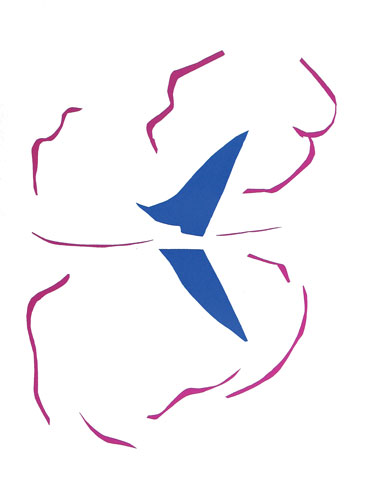At 2 a.m., after about two months on the Atlantic Ocean, Christopher Columbus and his crew sighted land in the New World. Columbus was attempting to find a sea route west from Spain to India. Believing that he had arrived somewhere in Asia, he insisted that he had discovered the fabled lands described by fellow Italian explorer Marco Polo during the Mongol Empire. Perhaps this is partly why the New World was named after yet another Italian explorer, Amerigo Vespucci. Columbus went on to make three more round-trip voyages to the Americas, sponsored by the Ferdinand and Isabella of Spain. These voyages touched off the European age of exploration and colonization of the American continents.
October 13, 1994
The unmanned space probe Magellan plunged itself into the atmosphere of Venus, ending its four-year mission to map the planet’s surface. It had started its orbit in August 1990. By the following January, it had swept over nearly 55 percent of the planet’s surface, an area comparable to the distance from Los Angeles to New Delhi, India. The public was then invited to name the newly discovered craters for notable women, such as Sappho, Judy Garland, and Helen Keller. Magellan was the first spacecraft to change its orbit using a technique called aerobraking. This allowed it to include variations in the planet’s gravity field in its imaging data. The global Venusian map was completed in 1993, after the spacecraft had circled the planet almost 8,000 times.
October 14, 1964
At 35, Martin Luther King Jr. became the then-youngest recipient of the Nobel Peace Prize. He was awarded it for leading nonviolent resistance campaigns against racial prejudice. Inspired by Mahatma Gandhi’s success with nonviolent activism, King put the same principles into practice in the civil rights movement. He traveled millions of miles and gave thousands of speeches, condemning injustice and advocating peaceful protest and action. King donated the Nobel Prize money, which amounted to about $54,000 at the time, to the civil rights movement. He was assassinated in 1968 in Memphis, Tennessee, where he was to lead a protest march in sympathy for garbage workers on a strike.
October 15, 1582
The Gregorian calendar began the day after October 4, the last day of the Julian calendar. Thus, 10 days were simply eliminated. The Julian calendar had gained three days every 400 years, thanks to its system of one leap year every four years. This meant that Easter kept drifting further and further away from the spring equinox. In the calendar we use today, introduced by Pope Gregory XIII, a leap year must be exactly divisible by 4 as well as 400. Thus, the years at the end of some centuries didn’t leap – 1700, 1800 and 1900, to be precise. (2000 did, but 2100 won’t.) Both calendars were in simultaneous use for almost two centuries, designated “Old Style” and “New Style” respectively. Russia switched from Julian to Gregorian only in 1918; and Greece, the last holdout, waited until 1923.
October 16, 1962
The Cuban Missile Crisis began. For 13 tense days, the United States and opposing superpower Soviet Union were locked in a standoff over the presence of Soviet nuclear missiles in Cuba. It was the closest the cold war had ever come to exploding into armed conflict. The Cuban government had aligned itself with Moscow after it had swept into power in 1959, alienating the United States. 1961 saw an American invasion attempt of the island, followed by a deployment of missiles in Turkey within targeting range of the Soviet Union. By September 1962, the Soviets had placed medium-range ballistic missiles in Cuba. President John F. Kennedy was informed on October 16, and he convened the Excomm, the national-security committee that discussed possible responses and consider potential consequences. Only after nearly two weeks of deliberations, actions and reactions – not to mention secret and public communiqués between Kennedy and Soviet Premier Nikita Khrushchev – did the crisis abate.
October 17, 1933
Albert Einstein moved to Princeton, New Jersey. By that time, he had been awarded the 1921 Nobel Prize in Physics for his explanation of the photoelectric effect, the fact that metals emit electrons when light shines upon them. Two years before that, he had gained worldwide fame for what the London Times called a “new theory of the universe” that overthrew Newtonian physics. Einstein was born in the German Empire but had acquired Swiss and Austrian citizenships during his early career. His fame took him further abroad, and he became a visiting professor three times at the California Institute of Technology. After the Nazi government raided their house, Einstein and his wife Elsa renounced their German citizenship and became refugees in Belgium and London. Then the Princeton Institute for Advanced Study (not Princeton University, as is often thought) offered him a position as resident scholar. Einstein accepted. He became an American citizen in 1940 and, despite being a pacifist, advocated for the United States to build the atom bomb, which helped the Allies win World War II.
October 18, 1961

Le Bateau, an 8-year-old cut-out by Henri Matisse, was hung the wrong way up at New York City’s Museum of Modern Art. Part of an exhibition of the artist’s last works, it stayed that way for more than a month and a half, unbeknownst to a hundred thousand visitors. For that matter, it was obviously not beknownst to museum staff either! It took stockbroker and Matisse fan Genevieve Habert to correct the mistake one Sunday evening, on her third visit. She had been so bothered by the upside-down artwork that she had brought a catalog proving her instincts were right. Alerting a security guard didn’t help, as he declined to believe the learned museum staff would have made such a public error. The office staff was not on duty that day, so Habert gave The New York Times a call. The editors notified the museum director, but then they ran the embarrassing story, on the same day the picture was righted. Can you tell, from the image on this page, if it’s right side up or not? It’s not easy with modern art! (Image adapted from Wikipedia)


